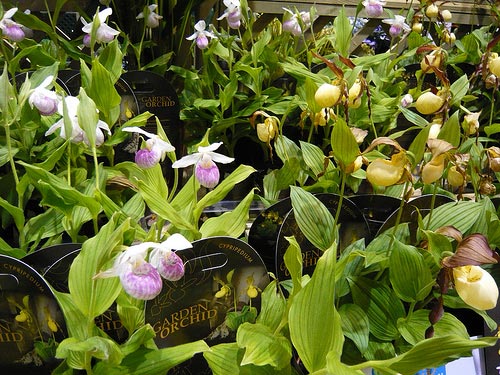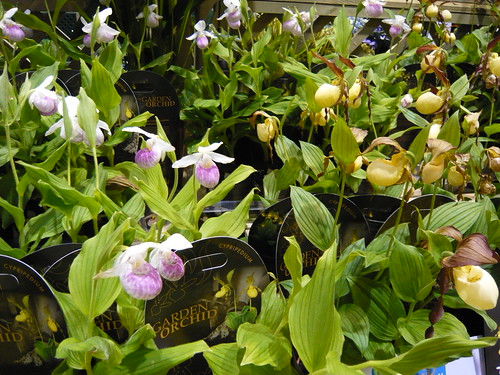
Garden Orchids – Cypripedium & Hybrids
Originally orchids were mostly found in tropical and subtropical areas and that is why they are foremost in our thoughts as indoor and houseplants.
What is less well known is that many orchids can also grow in areas where the temperature falls to -20°C.
One type of winter-hardy orchid from Thompson & Morgan is Cypripedium. They protects themselves by staying underground in winter but in spring the shoots appear above the ground and start flowering after just three or four weeks.
- There are dozens of Cypripedium varieties which all have a spectacular inflorescence.
- The Cypripedium flowers annually in May and June.
- Cypripedium are named from the Dutch after a woman’s shoe.
How and Where to Grow Orchids in your Garden
- The plants prefer a sheltered and shady spot but love the morning sun.
- A north wall is a good spot but orchids also perform well in a border with shade from trees and shrubs.
- They like a sandy soil, and combine excellently with ferns or little Hosta varieties.
- Dig a hole and plant into moist soil.
- If necessary, make the structure of the soil around the hole looser with sand or clay granulate.
- When you plant your orchid directly in the garden, take care that in the first year that the spoil does not dry out.
- After flowering, the plant makes new shoots and settles in its new spot.
- Orchids do not need much fertiliser.
- When the orchid has got a good spot in your garden it will last for many years.
- After flowering it seems that the plant stops growing but under the ground it is making new buds anb roots.
Seasonal Tips for Outdoor Orchids
- When resting, orchids are resistant to very low temperatures.
- However, when the shoots start to grow, late-night frost can cause damage.
- When late-night frost is predicted damage can be prevented by putting a bucket or big plant pot upside down over the plant and removed in the morning.
- During the first year in particular you must keep an eye on night frosts because the plant has not yet acclimated to the climate in your garden.
- In autumn the leaves of the orchid die off and the plant starts its winter rest.
- The old dead foliage can be cut back to 5 cm above the soil.
- Take care that you do not damage the new shoots when removing the old leaves or when weeding.
- Do not cover the plant with peat but some old dry leaves are fine.
- Often the tips of the new shoots are already visible
- The plant can resist low temperatures and cold helps to start sprouting in spring.
- In spring the plant sprouts again and under good circumstances produces even more shoots and therefore with more flowers. The cycle of the plant now starts again.
With thanks to Garden Orchids a trade supplier of Orchids. The pictures not necessarily Cypripedium are from their stand at the Glee show Birmingham 2011.
Further information from the Hardy Orchid Society  -  or Cypripedium Varieties in pictures





